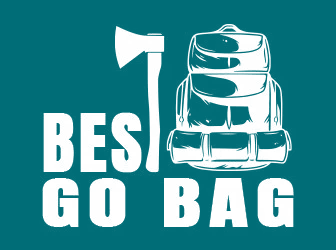The recent deadly flooding in Kentucky got me thinking there are probably many people who wouldn’t know what to do if they suddenly got caught in a flash flood.
Slow-moving thunderstorms dumped massive amounts of rain across the eastern portion of the Bluegrass State in late July. Many residents drowned from floodwaters, which damaged or destroyed hundreds of homes and vehicles.
As rivers and creeks rose out of their banks, hundreds of rescues occurred via boats and helicopters. Some people waited on roofs and up in trees until help came.
Unfortunately, at least 37 died during the flooding. Kentucky Governor Andy Beshear predicted that more bodies will be found.
Have your supplies ready and waiting
As we continue our theme of “Back to Survival School,” I thought this would be a good time to talk about ways to deal with flash floods.
If we have these strategies ingrained in our minds, they’ll be second nature when we’re faced with the situation. And that’s crucial with flash floods. They occur quickly with little warning, so acting fast is important.
Well before a flash flood is a possibility, make sure your bug-out bag and vehicle emergency kit are well-stocked and handy.
Consider in advance everything you might need in order to deal with a flash flood and include all those items in your preparations.
Know the difference between watch and warning
If you believe a flash flood is a possibility, remember your flood safety warning signs. A flood or flash flood “watch” means a flood or flash flood is possible in your area.
A flood or flash flood “warning” means flooding or flash flooding is already occurring or will occur soon in your area.
Move immediately to higher ground or remain on higher ground. Stay tuned for possible evacuation orders.
If you’re on foot and come to a flowing stream, stay out of it. Even if the water is not deep, it could push you toward deeper water.
Prepare your family and home
If you believe your home might become a victim of flooding, there are some things you can do in advance.
First, create a family emergency plan and make sure everyone in your household knows what their responsibilities are. The plan should also include a place to meet if you’re separated.
Tie down or bring inside outdoor objects that could be damaged or swept away by flood waters. Including patio furniture, trash cans and children’s toys.
Unplug sensitive electronic equipment. Elevate any items that would be rendered useless by exposure to water. Make sure your sump pump is working properly.
Cautions when arriving back home
If you evacuated during a flash flood but now wish to return, first check with authorities to make sure it’s safe to do so.
Watch out for loose power lines, damaged gas lines and cracks in your home’s foundation before re-entering. If you smell natural or propane gas or hear a hissing noise, leave immediately and call your local fire department.
When cleaning up your home – inside and out – following a flood, wear protective clothing including a facemask, rubber boots and rubber gloves.
Check on neighbors and friends to make sure they’re OK. Especial the elderly, those who live alone and those with medical conditions.
Turn around; don’t drown
What if you’re in your car when waters start rising quickly? There are some things you can do to increase the odds that you will stay safe.
First of all, if you know water is starting to inundate roads ahead of you, follow the advice of the National Weather Service. They launched a campaign on this subject called “Turn Around Don’t Drown.”
You might think your vehicle can pass through water that’s a foot or less deep, but there are two problems with that.
One is that the water might be deeper than you think. The other is that even one foot of water can carry a car away. And pull that car into deeper areas. Maybe even completely submerging it.
Escape from your vehicle
Mike Berna is a regional director and instructor with the Rescue 3 international group. They provide training to emergency services.
He said that if you suddenly find yourself in deep waters while driving, undo your seatbelt in case the vehicle flips over.
Roll a window down just a bit, which will make it easier to break if necessary. Don’t immediately try to get out of your car. You may be safer in it than wading or swimming in waters that could push you toward other vehicles or rocks.
If the vehicle starts to fill with water, however, you’ll need to get out. If you can’t get a door or window open far enough, smash a window with a hammer or other tool.
Liberty Band Solar Radio
Of course, whether you are on foot or in a car when a flash flood is a possibility, your best bet is to keep on top of emergency warnings. And heed those warnings by getting to higher ground as soon as possible.
And the best way to stay informed with timely news is with a reliable weather radio. A NOAA weather radio is a great way to learn about – and avoid – flooding and threatening weather.
Having access to critical information is key to surviving in any emergency. These radios broadcast official National Weather Service warnings 24/7. Plus watches, forecasts and other hazard information.
4Patriots has created the ultimate tactical information hub. It’s the Liberty Band Emergency Solar Radio. This lightweight radio features NOAA weather alerts. And it recharges with the sun.
It has seven 24/7 weather channels and AM/FM and shortwave radio. Plus LCD display clock with alarm and an ultra-bright flashlight. It can even power your cellphone when you need it most.
Summer means flash floods, hurricanes, tornados and other severe storms. The Liberty Band will provide you with the advance notice you need to seek shelter.


